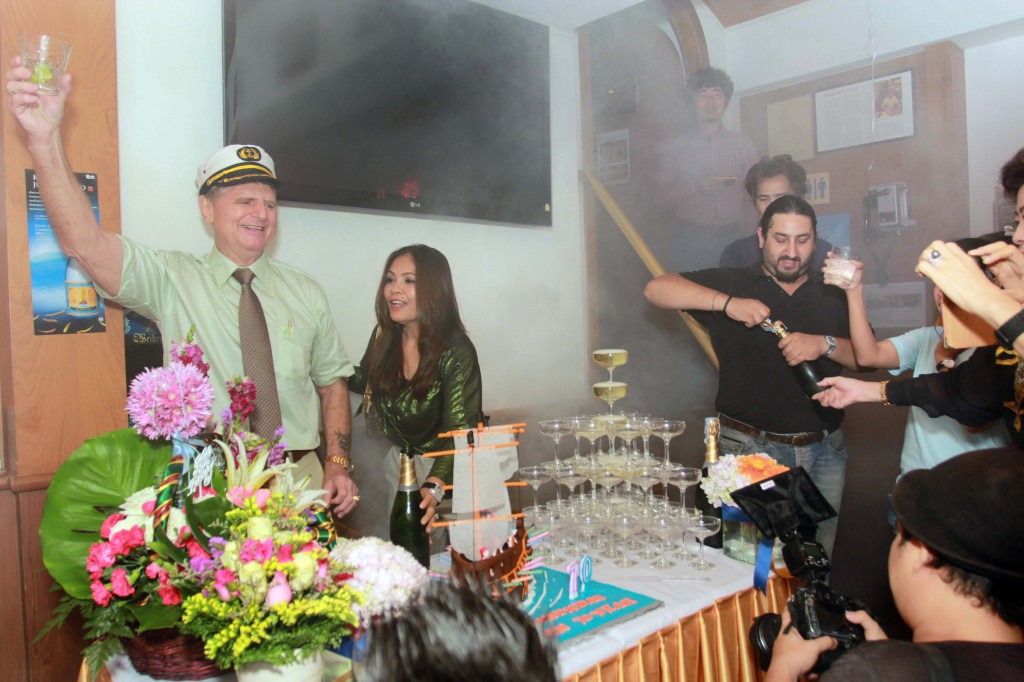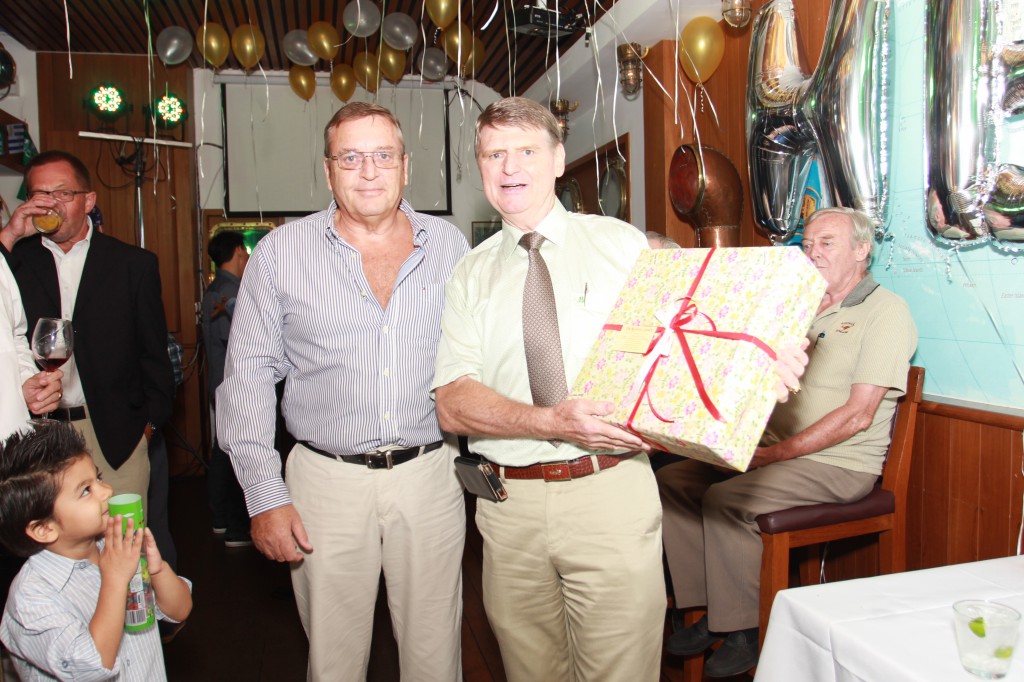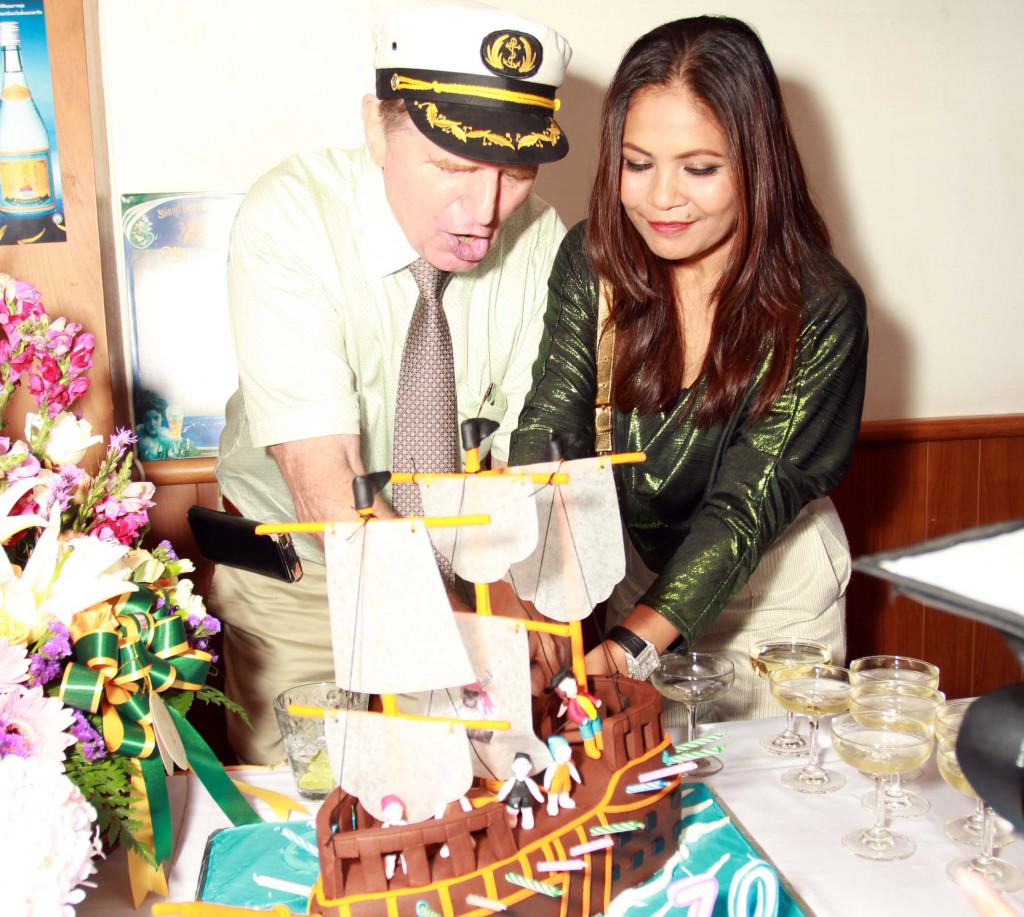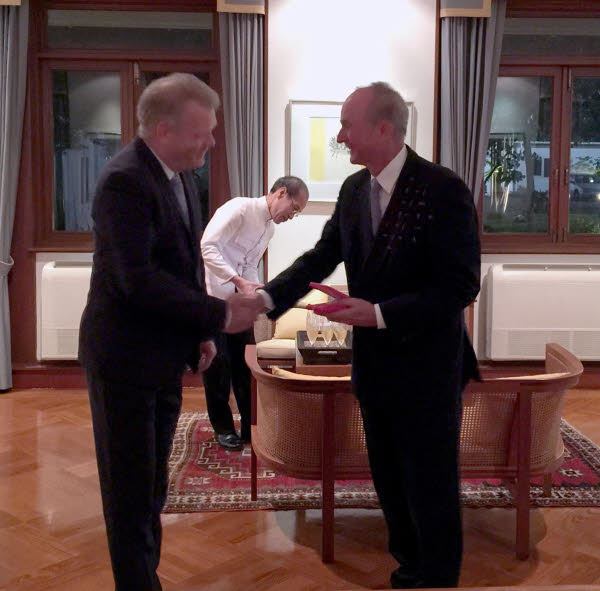Feared as a drillmaster, admired for his courage and determination.
For many years the most prominent relic on the desk of Colonel August Kolls was the polished skull of Ai Muang, the bandit and robber chief. He had been caught by Kolls, sentenced to death, and immediately beheaded by the executioner. After dark the ordinary gendarmes didn’t dare to enter the room, they were afraid of Ai Muang’s spirit.
It is in no way possible for us today to imagine how life was lived in the countryside and jungles of Siam, around year 1900, complete lawlessness reigned; conditions were not for sissies or a weak-willed nature that is for sure.
The gendarmes in Denmark and Siam
The Royal Siamese Gendarmerie was the first police corps in the Siamese provinces. It was established in 1897 after order by the absolute monarchy, represented by King Rama V (Chulalongkorn) and Prince Damrong, his brother. Before that lawlessness reigned in the countryside and the hand of the central power was not to be seen outside the provincial towns. The officers recruited were mostly Danish. It has not been discussed much, but there cannot be much doubt that the inspiration for the corps is also to be found in Denmark.
Around this time Prime Minister J. B. S. Estrup headed the government in Copenhagen; he did so by using provisional laws since the majority in Parliament was against his ultra right wing ruling party, but he had the support of King Christian IX. On 27 October 1885, a provincial corps of Gendarmes was founded by Estrup, called ‘The Blue Gendarmes’ because of the color of their uniforms. Their organization and duties in the provinces were much the same as the later corps in Siam -although conditions were very different. Prince Damrong, Minister of the Interior, visited Denmark as early as 1891 where there are all possibilities that he was informed about ‘The Blue Gendarmes’. King Chulalongkorn visited Europe and Demark 1897, only a few months after the start of EAC. More of his sons got their military training in Copenhagen. The relations between the two Royal Houses were most cordial. The Danish Commodore Richelieu in the Siamese Navy and H.N. Andersen had years earlier been instrumental in establishing the contact.
It can be mentioned that some of the officers of the Siamese corps came from The Royal Danish Life Guard. They could not have been granted a leave without the King knowing; among them was Hans Marqvard Jensen, ‘The Hero of Lampang’.
But a fantastic experiment it was: tall and slim young blond and blue eyed officers, from a totally different culture, transferred to the jungles of Siam working with short Siamese privates from the backwaters of Siam. Young men who had never in their life seen a ‘farang’ before and who were without any knowledge of military skills, many of them were not literate.
The Man from the Moon
August Kolls was one of these ‘Men from the Moon’, tall, blond, sporting an impressive moustache and with penetrating ice blue eyes that his gendarmes didn’t dare to meet.
But in fact it started in the village of Pedersborg by Soroe the 23. July 1867. Here Maria Dorthea Wendt, married to farmer C.A.F. Kolls, brought a son to the world. He was baptized August Theodor Frederic but soon thereafter adopted by steam miller Kolls (his uncle we suppose) in Tappernoeje. Next we meet him as Second-lieutenant 1888. He arrived in Bangkok on 16 January 1890, where he was immediately promoted to Premier-Lieutenant. For years he worked in the army and in the Marine-infantry as instructor and a heavy handed drillmaster, feared by his soldiers.
When the gendarmerie was founded he was hired and for many years headed the Gendarmerie station in Nakhon Ratchasima (Korat), where he, among other duties, trained and instructed the enrolled Danish officers. On16 October 1902, it was also his sad duty, as the liaison officer, to forward the detailed Death Certificate of Captain Hans Marqvard Jensen to the acting Danish Consul in Bangkok.
Meanwhile, the most important task was to make the mountainous route from the southern plains to the plateau of Korat safe for the merchants and their caravans. The mountains were in the hands of gangs relieving all travelers of their belongings. Kolls traced them down, he himself in front, an extremely easy target as he was. In a year or so he simply cleansed the mountains out, many dead and wounded on both sides. It was on such an expedition he learned that Ai Muang was that night sleeping with a mistress in a certain house – a traditional house, on piles. Kolls banged the floor from underneath and called for Ai Muang to come down and meet him. Ai Muang did, undoubtedly knowing that he had ran out of luck and life.
In the South
Then, in 1908 August Kolls was transferred to the South, in 1909 promoted to Lieutenant-Colonel. Also here he found the ordinary robbers and highwaymen, but also some very disgusting elements among the public officials in the Southern provinces. When he exposed these people’s doings, they of course became his sworn enemies.
It seems that the Colonel simply did what he found it right or necessary to do, without thinking much of the consequences or personal protection. That also goes for the physical challenges he gave himself; extensive travelling in the jungle, drinking raw water and so on. He had more dysentery bouts. He was admitted to the Presbyterian Mission Hospital late June 2011 with yet another attack of dysentery. From that he died on 4 July 1911. He left a Siamese wife and two young sons, one of them being Charoen Kollasutr, who lived for many years in Chiang Mai. In Kolls’ family it has been a part of the family saga for generations to tell that when King Rama VI heard about Kolls’ death he should have exclaimed with a sigh: “Now I have lost my right arm in the South”.
On the memorial in Trang we read: ‘By the Gracious command of His Majesty the King of Siam this stone is erected in recognition of long and faithful services to the memory of Lieut. Col. Kolls born in Denmark 23rd July 1867 died in Trang 4th July 1911’.
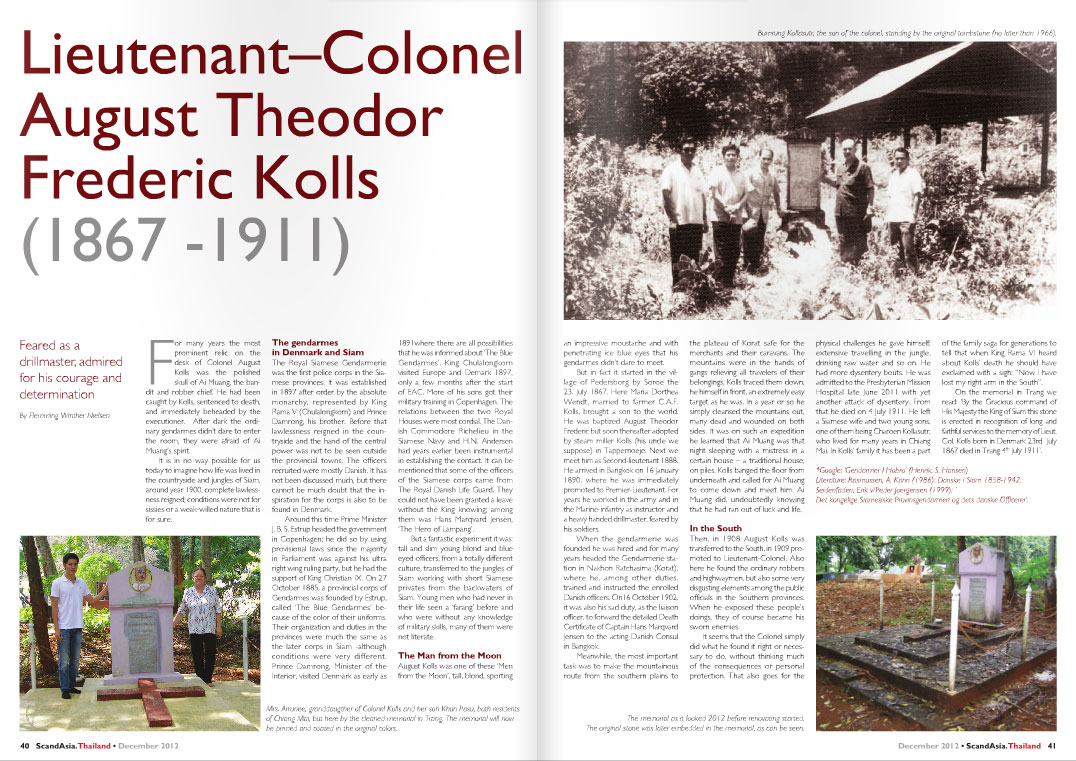
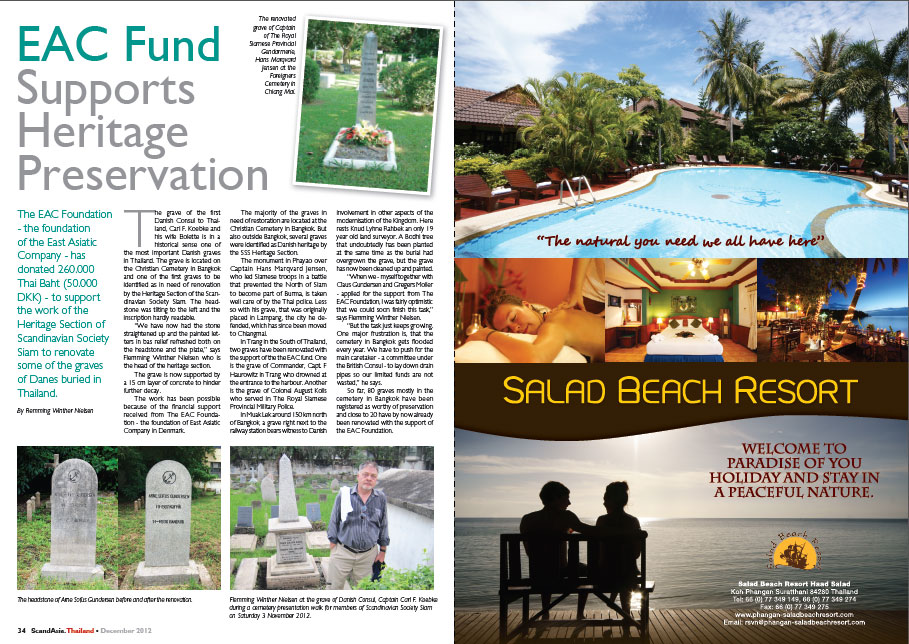
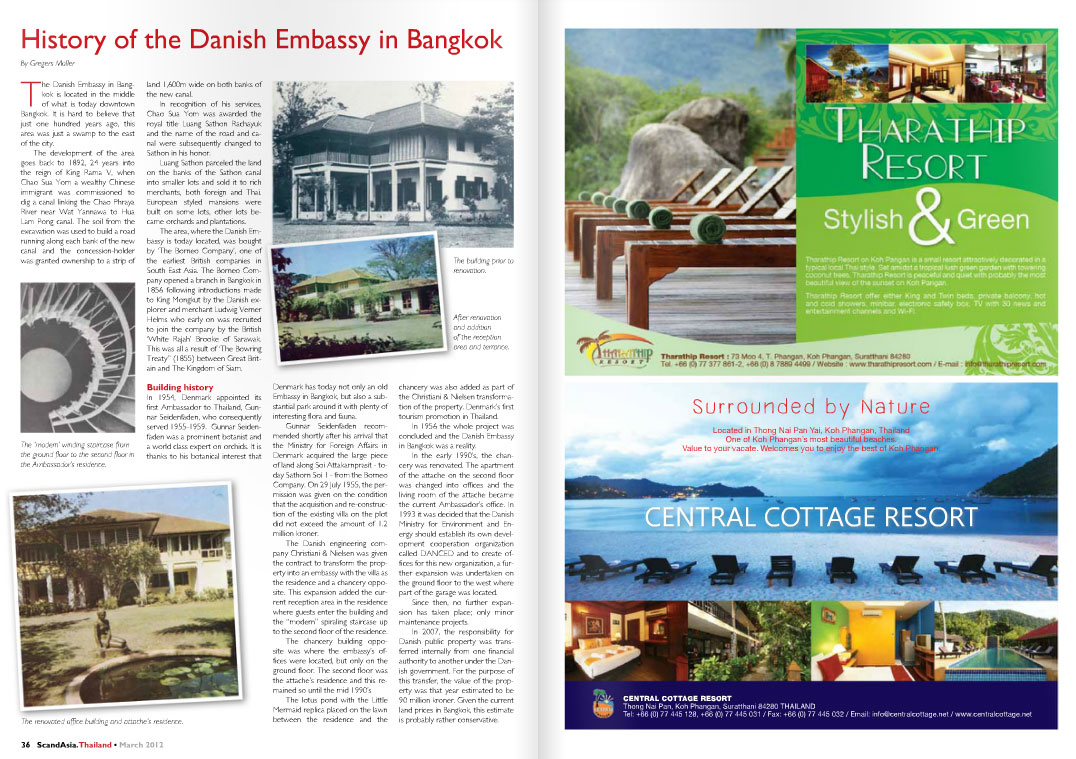





 Eva knows Bangkok by heart and she remembers her first school and how they used to have lessons sitting outside by the khlongs, in the middle of Bangkok.
Eva knows Bangkok by heart and she remembers her first school and how they used to have lessons sitting outside by the khlongs, in the middle of Bangkok. Mrs Tina Zarlimee, also Swedish, has been living in Thailand for more than 20 years. Tina is married to a Thai, has a 23 years old son and lives in Hua Hin, but is often in Bangkok where she has a successful travel agency “Nordic Travel” in Sukhumvit soi 20.
Mrs Tina Zarlimee, also Swedish, has been living in Thailand for more than 20 years. Tina is married to a Thai, has a 23 years old son and lives in Hua Hin, but is often in Bangkok where she has a successful travel agency “Nordic Travel” in Sukhumvit soi 20.



















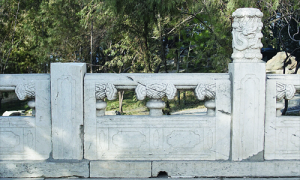
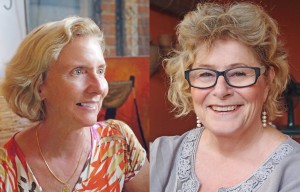
 Eva knows Bangkok by heart and she remembers her first school and how they used to have lessons sitting outside by the khlongs, in the middle of Bangkok.
Eva knows Bangkok by heart and she remembers her first school and how they used to have lessons sitting outside by the khlongs, in the middle of Bangkok.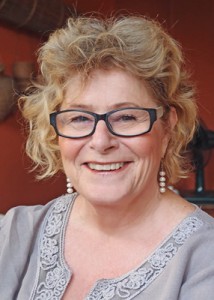 Mrs Tina Zarlimee, also Swedish, has been living in Thailand for more than 20 years. Tina is married to a Thai, has a 23 years old son and lives in Hua Hin, but is often in Bangkok where she has a successful travel agency “Nordic Travel” in Sukhumvit soi 20.
Mrs Tina Zarlimee, also Swedish, has been living in Thailand for more than 20 years. Tina is married to a Thai, has a 23 years old son and lives in Hua Hin, but is often in Bangkok where she has a successful travel agency “Nordic Travel” in Sukhumvit soi 20.